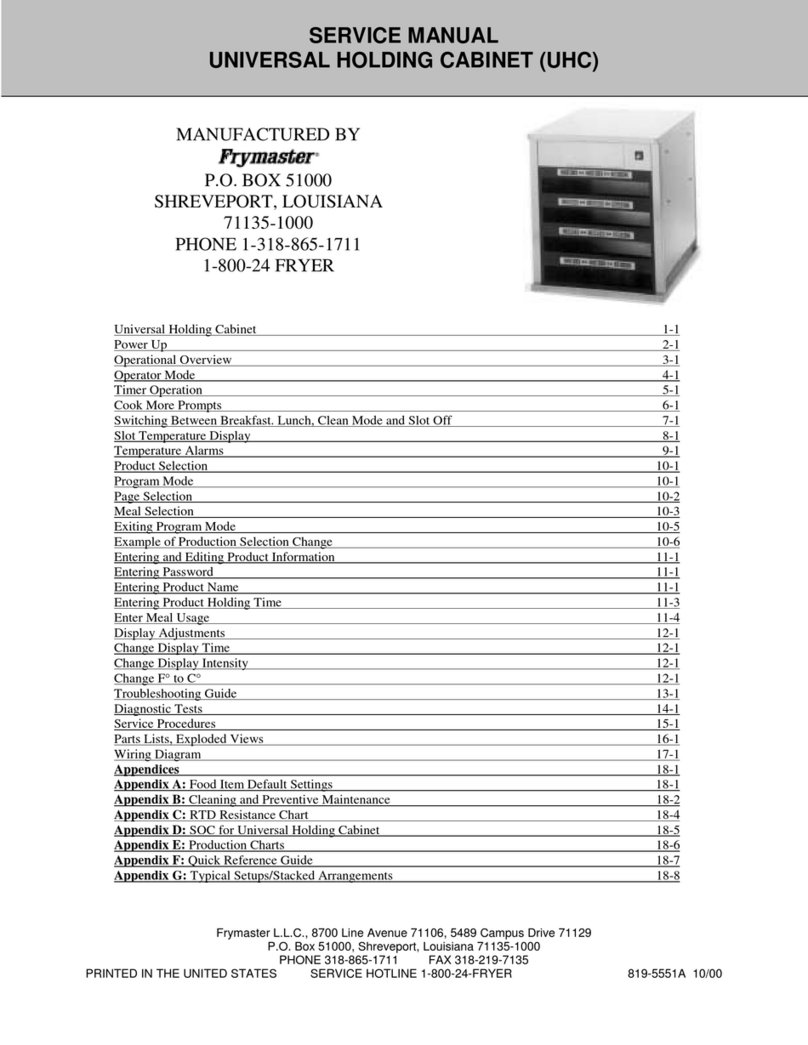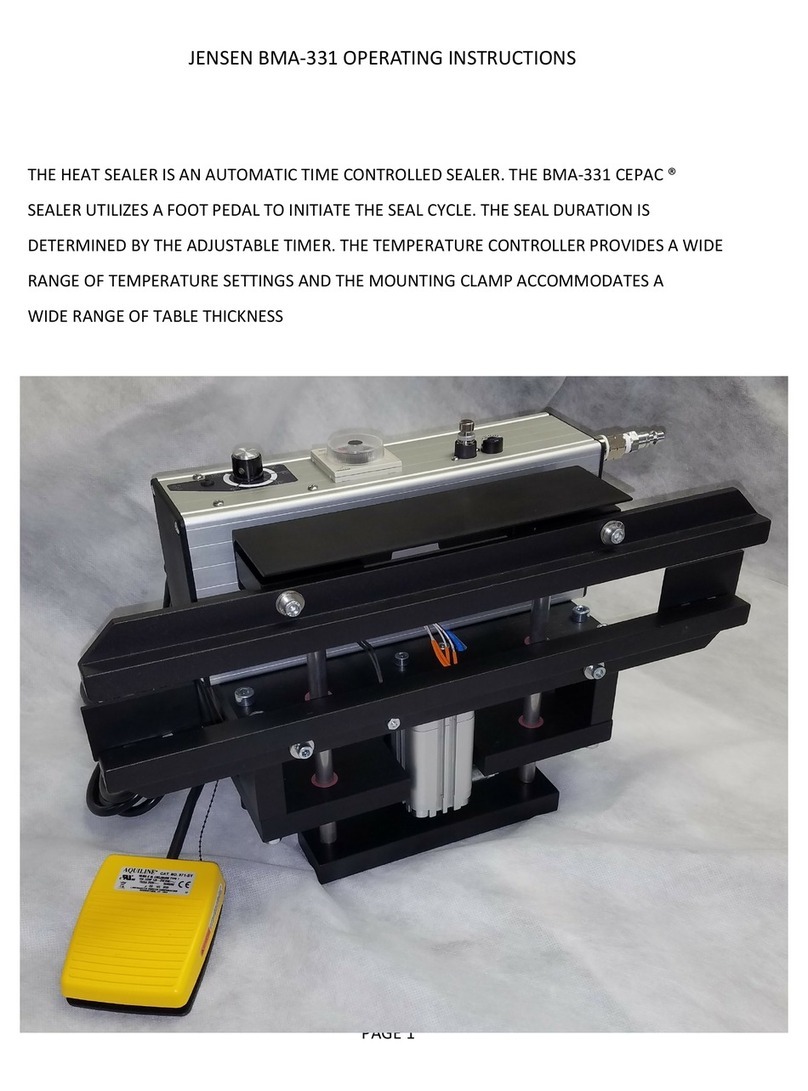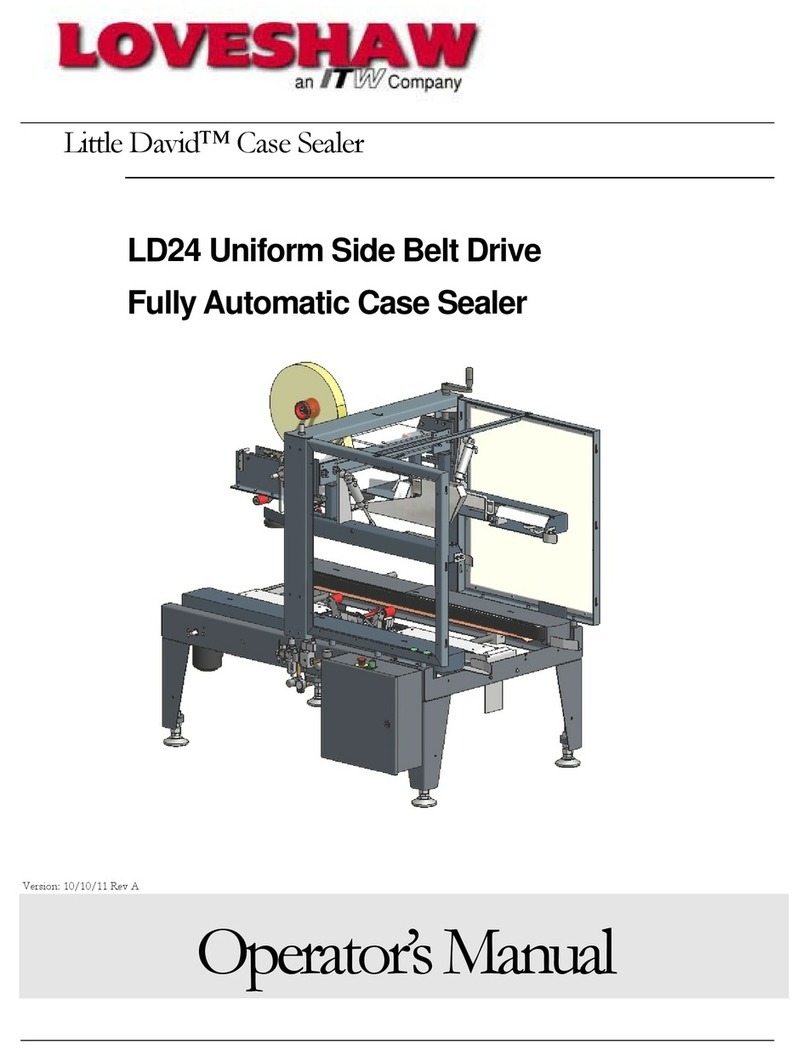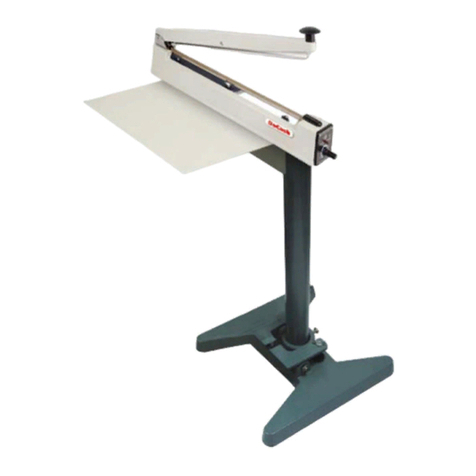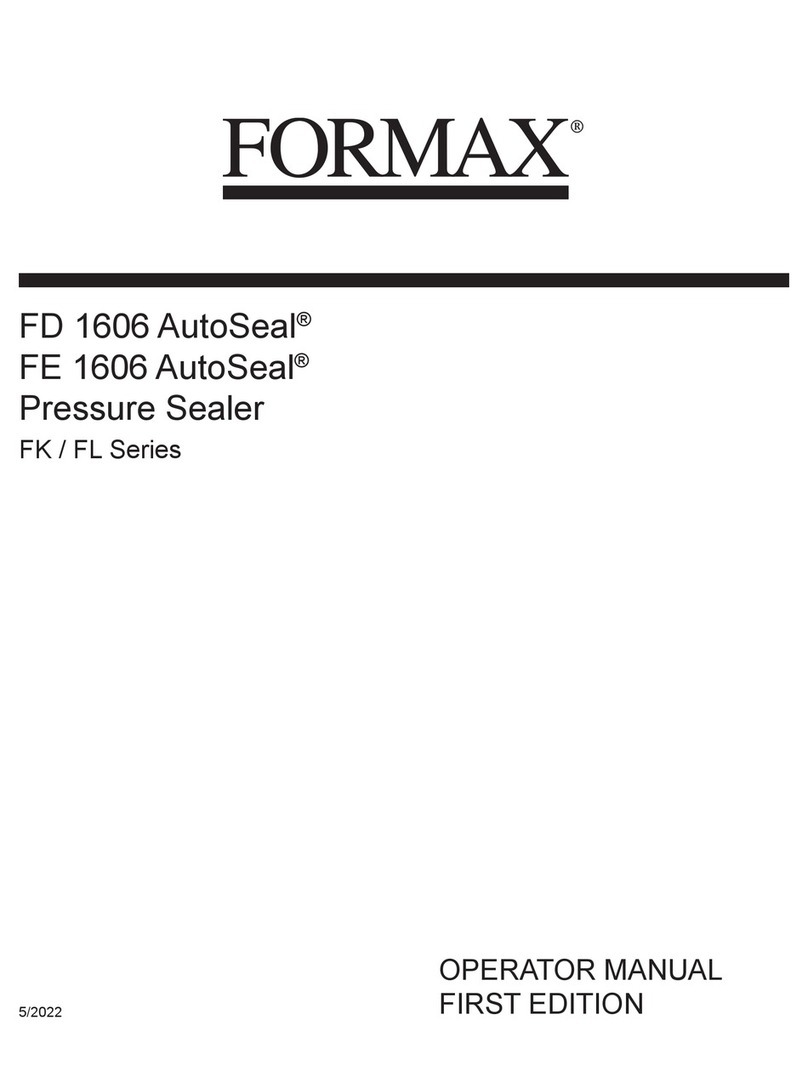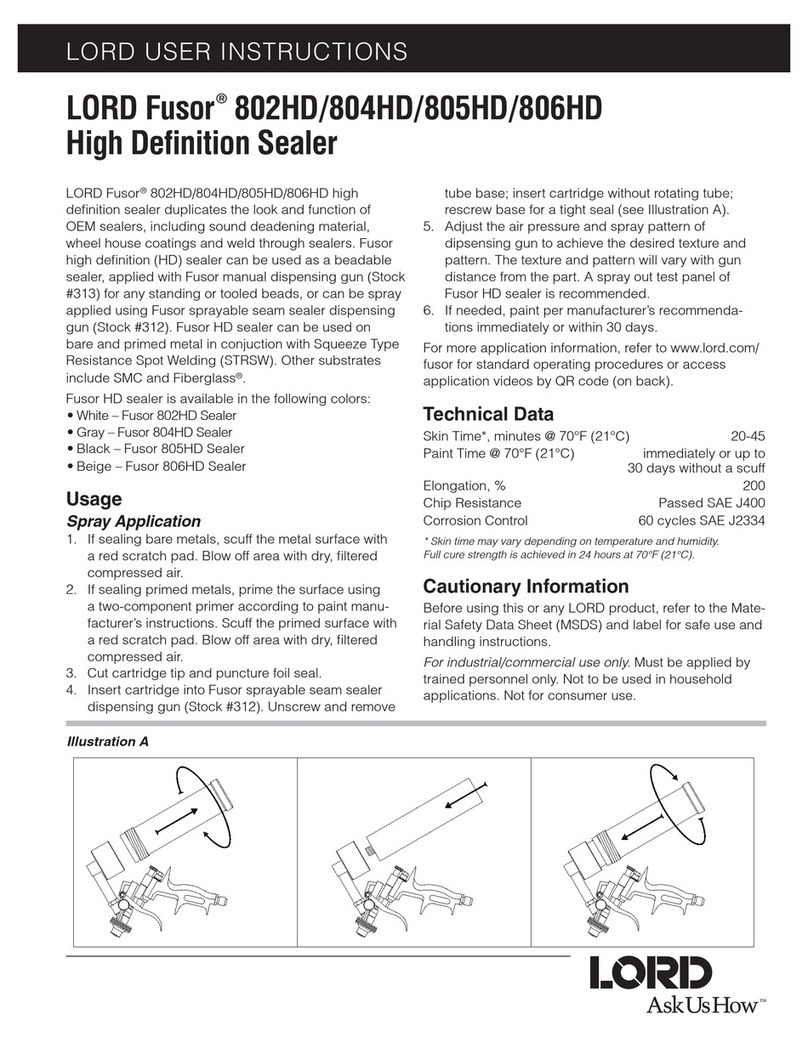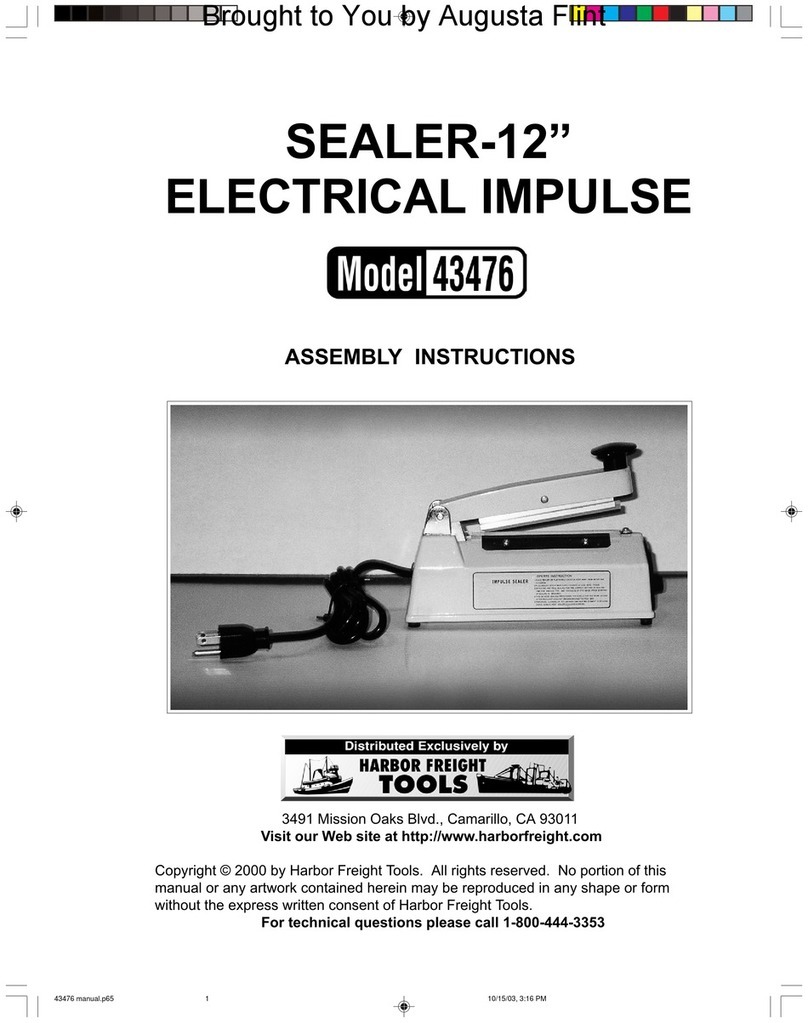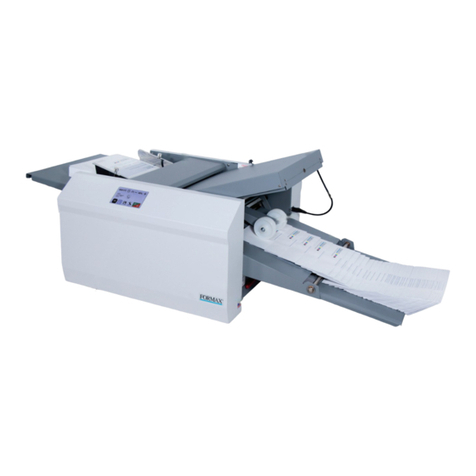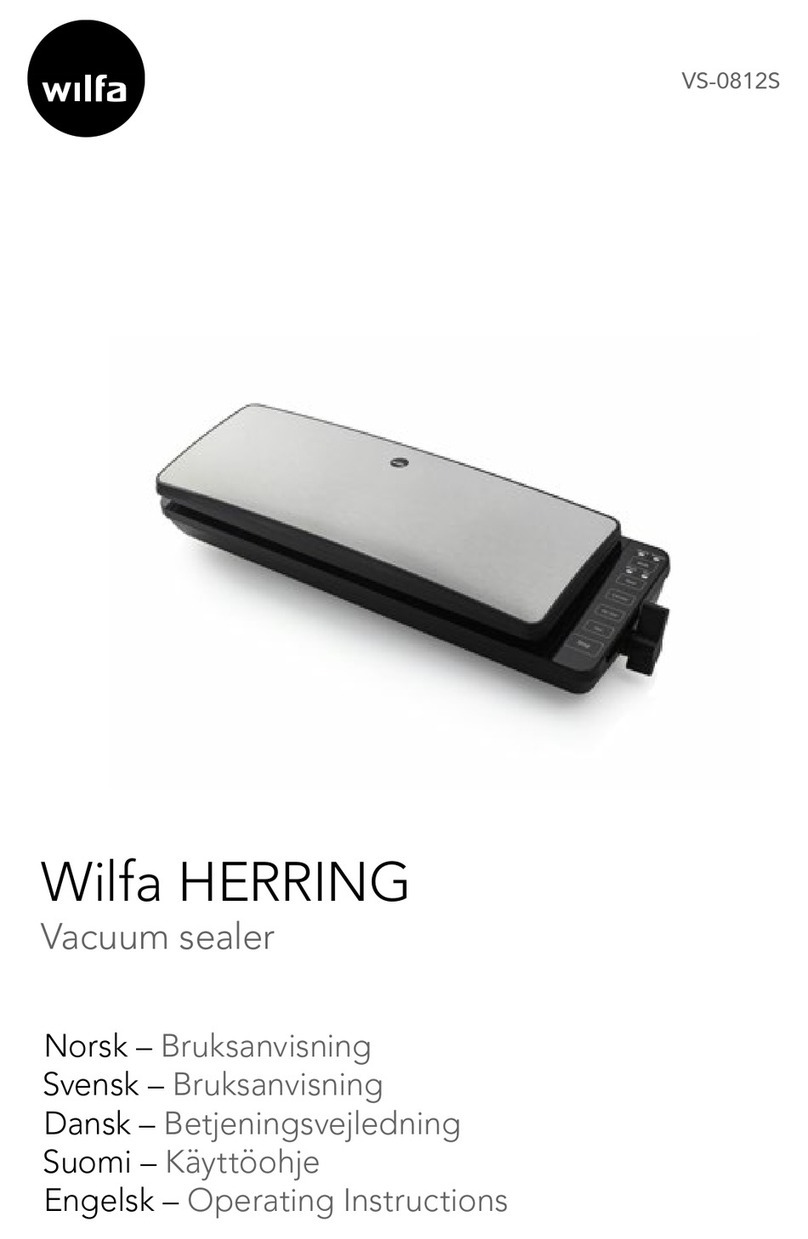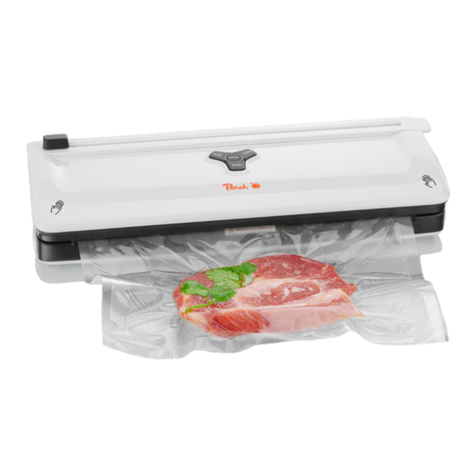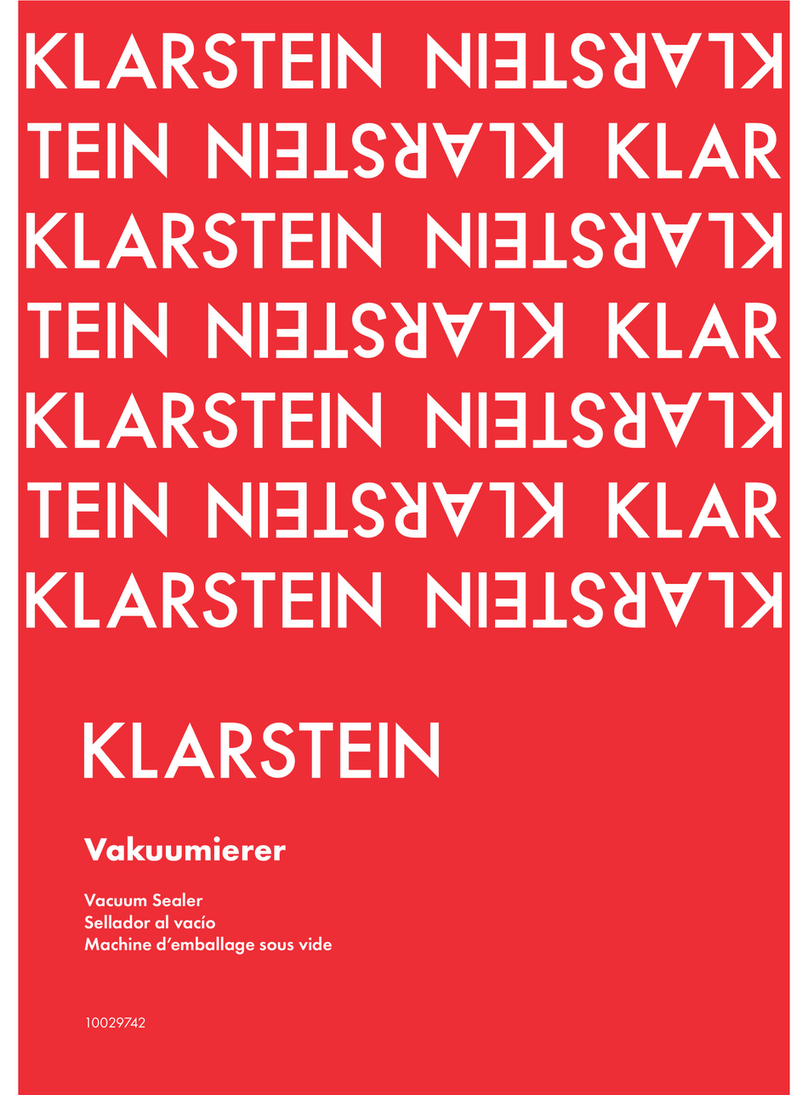Deublin 17/21 Series User manual

040-563
2018-10
Operating Manual Model/Series:
Number: GB
Version:
Rev. D Page 1 of 16 ©DEUBLIN
for air and hydraulic
with elastomeric seals
Rotating Unions
Series
17/21, 2117, 1690, 1790, 1890, 1379, 1479, 2300, D, MPSS-000037
for air and hydraulic
with elastomeric seals
OPERATING MANUAL

040-563
2018-10
Operating Manual Model/Series:
Number: GB
Version:
Rev. D Page 2 of 16 ©DEUBLIN
for air and hydraulic
with elastomeric seals
Content
1 For your Safety________________________________________________________________ 3
1.1 Intended Use __________________________________________________________________ 3
1.1.1 Application cylinder (Duo) _______________________________________________________ 4
1.2 Misuse ________________________________________________________________________ 4
1.3 Safety Instructions______________________________________________________________ 5
1.3.1 Hazards due to hot surfaces _____________________________________________________ 5
1.3.2 Hazards due to incorrect hoses __________________________________________________ 5
1.3.3 Hazards due to the media _______________________________________________________ 5
1.3.4 Hazards by faulty installation_____________________________________________________ 6
1.4 Structure of Pictograms _________________________________________________________ 7
2 Information as to this Manual ___________________________________________________ 7
3 Information on the Name Plate __________________________________________________ 7
4 Information on the Design ______________________________________________________ 8
4.1 Filtering of the Medium__________________________________________________________ 8
4.2 Compressed Air Purity Classes___________________________________________________ 8
4.3 Definition of Hydraulic Fluids_____________________________________________________ 9
4.4 Optional 1379/1479: use of support sleeves for vacuum applications _________________ 9
4.5 Connecting Options of the Rotating Union at the Machine Shaft______________________ 9
4.6 Options of Hose Installation ____________________________________________________ 10
4.6.1 Connection of hose to the rotating union _________________________________________ 10
4.6.2 Observe the “paired” connection of the medium___________________________________ 10
4.6.3 Using an anti-rotation element __________________________________________________ 11
4.6.4 Optional: Connection of a leakage line ___________________________________________ 11
5 Installation___________________________________________________________________ 12
6 Information on the Operation___________________________________________________ 12
7 Storage _____________________________________________________________________ 12
8 Maintenance _________________________________________________________________ 12
8.1 Maintenance Intervals__________________________________________________________ 12
8.2 Daily Inspection _______________________________________________________________ 13
9 Trouble Shooting _____________________________________________________________ 13
9.1 Potential Causes for Errors and their Elimination___________________________________ 13
9.2 Pack Rotating Union for Transport _______________________________________________ 14
10 Disposal_____________________________________________________________________ 15
10.1 Dispose of Packaging__________________________________________________________ 15
10.2 Dispose of Rotating Union______________________________________________________ 15
11 Spare Parts__________________________________________________________________ 15

040-563
2018-10
Operating Manual Model/Series:
Number: GB
Version:
Rev. D Page 3 of 16 ©DEUBLIN
for air and hydraulic
with elastomeric seals
1 For your Safety
This chapter provides information on the safe handling of DEUBLIN rotating unions.
❑For your own safety and the safety of other people read this operating manual carefully and
completely prior to working on or with DEUBLIN rotating unions.
❑This operating manual exclusively describes the rotating unions of the manufacturer DEUBLIN.
In the further description/explanation the name “DEUBLIN” is left out for a better readability.
❑This operating manual is a material part of the specified rotating unions. The operator is re-
sponsible for the personnel to take note of this manual.
❑Always use the latest version of the operating manual, available under www.deublin.eu.
❑The operator of the rotating unions shall not make any modifications or attachments to and
retrofitting of the rotating union without the manufacturer’s consent.
❑Please follow the additional instruction „Installation“ for a secure and correct installation of the
rotating union. The installation instruction is included with the delivered union.
1.1 Intended Use
The rotating unions of the series 17/21, 2117, 1690/1790/1890, 1379/1479, 2300, D and MPSS-000037
are suitable for the following media:
Series
Medium (1)
Air Water Hydraulic oil Brake fluid Vacuum
17/21/2117 • • • •
1690
• • •1790
1890
1379 • • •
1479
2300 •
D • •
MPSS-000037 • •
(1) In order to obtain the longest possible lifetime for rotating unions, the applied medium must meet
certain requirements, which are defined in chapter 4.2.
The rotating unions put the medium under a certain pressure forcing it through the rotating machine
components (e.g. machine shaft) to the load.
The rotating unions referred to are designed for non-potentially explosive environments and non-
combustible media.
Details on the operating range of the rotating unions are provided in the catalogue and/or the model-
specific installation drawing.
The rotating unions of the series 17/21, 2117, 1690/1790/1890, 1379/1479 , 2300, D and MPSS-000037
can be used as single-passage or multi-passage option, depending on the number of connections.

040-563
2018-10
Operating Manual Model/Series:
Number: GB
Version:
Rev. D Page 4 of 16 ©DEUBLIN
for air and hydraulic
with elastomeric seals
1.1.1 Application cylinder (Duo)
The following application is one example from a variety of applications.
This example shows how the cylinder is supplied with hydraulic oil or compressed air as medium.
Fig. 1: Schematic diagram showing the power transmission to the cylinder
The hydraulic oil moves the piston of the cylinder. The mating connections of the rotating union are
thereby used in pairs.
❑In order to extend the piston, the hydraulic oil is supplied through connection P1 of the rotating
union in front of the piston. P2 is un-pressurised.
❑In order to retract the piston, the hydraulic oil is supplied through connection P2 of the rotating
union behind the piston. P1 is un-pressurised.
Depending on the complexity of each application, the corresponding series with the required number
of connections and channels can be used.
1.2 Misuse
This chapter provides information on known misuse of rotating unions of the 17/21, 2117, 1690/1790/1890,
1379/1479, 2300, D and MPSS-000037 series.
The rotating unions are not suitable for the areas and applications described herein. Use in such ar-
eas or for such applications constitutes a misuse endangering people and machines and is therefore
prohibited. Always observe the operating data released by DEUBLIN on the model-specific drawing. It
can be requested from DEUBLIN.
Prohibition for the following areas:
❑Potentially explosive areas
The rotating unions of the 17/21, 2117, 1690/1790/1890, 1379/1479, 2300, D and MPSS-000037
series shall not be used in potentially explosive areas, as they are not approved for the require-
ments in potentially explosive areas. Operation in such areas may cause explosions.
❑Outdoor operation
Inadequate protection against weather conditions can result in premature failure.
Prohibition for the following applications:
❑Conveying of combustible media or hydrocarbons
Combustible media or hydrocarbons may ignite or cause explosions.
Exception: Thermal oil within the admissible temperature range. Please observe the safety
data sheet of the used thermal oil.
❑Food
Food, cleaning and disinfectant residues cannot be removed from the rotating unions. People
may suffer poisoning.
P1
P2

040-563
2018-10
Operating Manual Model/Series:
Number: GB
Version:
Rev. D Page 5 of 16 ©DEUBLIN
for air and hydraulic
with elastomeric seals
❑Connection to a piping system with excessive pressure
If excessive pressure is applied to the rotating unions, supply pipes can come off and cause
personal injury or property damage.
❑Connection to fixed pipes
If connection is via fixed pipes, the rotating unions may leak and the ball bearings may get
damaged.
❑Conveying of media which are too hot
If the media exceed the maximum admissible temperature for the rotating union, the seals can
be damaged which may result in leaky rotating unions and personal injury or property damage.
❑Application in ambient temperatures/with media temperatures below 3 °C
Rotating unions may be damaged if they are operated at temperatures (ambient or media) be-
low 3 °C.
❑Operation without a medium (dry run)
If the rotating unions are operated without a medium, the sealing surface of the rotating unions
might fail prematurely.
❑Operation at maximum speed and with maximum pressure
Speed and pressure must be adjusted to each another so that the rotating unions are not dam-
aged or fail prematurely (see model-specific installation drawing).
This list is not comprehensive and will be updated with results from product observation.
1.3 Safety Instructions
This chapter provides information on the hazards when using rotating unions.
1.3.1 Hazards due to hot surfaces
Frictional heat and the temperature of the medium causes rotating unions to rise in temperature. Skin
contact with heated rotating unions can cause injuries.
❑Use safety gloves and PPE (Personal Protective Equipment) protecting against heat when han-
dling the rotating union.
❑Attach a clearly visible danger sign visibly on/next to the rotating union in order to warn of
danger.
1.3.2 Hazards due to incorrect hoses
For the connection of the rotating union to the machine, you have to choose appropriate hoses for the
respective medium, which meet, the specifications for the application.
If you use incorrect hoses, they may become porous or burst. This can cause personal injury and/or
property damage to components of the machine.
❑Use only hoses which are suitable for the media, the maximum system pressure and the maxi-
mum temperature for the machine.
1.3.3 Hazards due to the media
When working on the rotating union, injuries can be caused by skin or eye contact with the media.
❑Observe the safety instructions for the flow media. Observe the COSHH Safety Data Sheet for
the flow media.

040-563
2018-10
Operating Manual Model/Series:
Number: GB
Version:
Rev. D Page 6 of 16 ©DEUBLIN
for air and hydraulic
with elastomeric seals
1.3.4 Hazards by faulty installation
If the rotating unions are installed incorrectly, hoses and connections may become leaky. The medium
can escape. Depending on the medium, personal injury or property damage to the components of the
machine may occur.
❑Before installing the rotating union ensure that no feed pressure and no residual pressure is
applied to the pipeline system of the machine.
- Please follow the additional instruction “Installation” for a secure and correct installation of
the rotating union. The installation instruction is included with the delivered union.
❑Install the hoses to the rotating union prior to mounting it at the machine shaft. This does not
apply to hoses with an SAE connection.
❑Install the anti-rotation element on the rotating union, tension free.
❑Make sure that the hoses are connected in compliance with the channel configuration of the
rotating union. Pay attention to the model specific installation drawing.
❑Install the rotating union on the machine using hoses only, in order to avoid stress on the rotat-
ing union.
❑Install the hoses free from stress.
❑Rotating Unions with leakage line: Install the rotating union in a way that the leaking medium
can be carried away securely downward at the lowest point and that the drain line shows a fall
(min. 15°).

040-563
2018-10
Operating Manual Model/Series:
Number: GB
Version:
Rev. D Page 7 of 16 ©DEUBLIN
for air and hydraulic
with elastomeric seals
1.4 Structure of Pictograms
This chapter provides information on the meaning of the pictograms used in the manual.
Warning
Potentially dangerous situation, which may result in death or serious injury.
Note
Potentially harmful situation in which the product or surrounding objects can be dam-
aged.
Application notes
and other useful information.
2 Information as to this Manual
The copyright as to this manual remains with DEUBLIN. Subject to changes!
❑You can download the latest version of this manual under www.deublin.eu.
❑Always use the latest version of the operating manual.
3 Information on the Name Plate
Model number
DEUBLIN‘s internal identification / date of manufacture
MADE IN <<country of manufacture>>
Fig. 2: Name plate
The coding of the model number is described in the catalogue. The model number corresponds to the
order number.
Warning
Note
Info

040-563
2018-10
Operating Manual Model/Series:
Number: GB
Version:
Rev. D Page 8 of 16 ©DEUBLIN
for air and hydraulic
with elastomeric seals
4 Information on the Design
This chapter provides information as to which items have to be observed in the design in order to have
a positive effect on the service life of the rotating union.
You can obtain the drawings of the rotating unions from DEUBLIN to integrate the ro-
tating union in your drawing.
You will require the model-specific installation drawing of your rotating unions to imple-
ment it into your design and to operate the rotating unions in a safe manner.
The model-specific installation drawing of the respective rotating union contains e.g.:
❑torque moments of the union
❑technical data
❑tolerances
❑approved media
4.1 Filtering of the Medium
Unfiltered media with a particle size of more than 60 µm, increased wear of the rotating union.
Please use the following classes of liquid media:
❑Class 5 in accordance with ISO 4406:2017 Code 17/15/12 or
❑Class 6 in accordance with NAS 1638
Determine the required filter performance data according to standard ISO16889:2008 to achieve a
maxi-mum particle size of 60μm.
The larger the particles in the media, the higher the wear of the rotating union is. The
higher the total of all particles (polluting load), the higher the wear.
❑Insert a filter in front of the rotating union which filters particles with a size of 60 µm and larger
from the media.
4.2 Compressed Air Purity Classes
This chapter only applies for series 17/21, 1217, 1690/1790/1890 and MPSS-000037.
To ensure the longest possible service life of the rotating union, DEUBLIN recommends using a com-
pressed air purity class according to ISO 8573-1:2010 [6:4:4]. This results in the following parameters
for the compressed air:
Particles Water Oil
Mass concentration
Cp [mg/m³]
Pressure dewpoint
[C°]
Concentration of total oil
[mg/m³]
0 < Cp ≤ 5 ≤ +3 ≤ 5
Info
Info
Info

040-563
2018-10
Operating Manual Model/Series:
Number: GB
Version:
Rev. D Page 9 of 16 ©DEUBLIN
for air and hydraulic
with elastomeric seals
4.3 Definition of Hydraulic Fluids
The hydraulic fluid that is used must correspond to the following definition: Mineral oils according to
DIN 51524 (HL; HLP)/ ISO 6743/4 (HL, HM, HV) in viscosity classes 10, 22, 32, 46, 68 and 100 mm²/s).
4.4 Optional 1379/1479: use of support sleeves for vacuum applications
For vacuum applications of series 1379/1479, support sleeves are used for the connections to the
flange. These support sleeves prevent the O-rings from being drawn into the channel in the event of a
vacuum which would cause the rotating unions to leak.
Support sleeves and installation instructions are supplied together with the rotating unions of series
1379 and 1479.
Component damage due to incorrect installation
If the support sleeves are inserted into the channel with O-ring already in position, you
risk crimping and damaging the O-rings.
❑Remove the O-rings, insert the support sleeves, and then insert the O-rings.
4.5 Connecting Options of the Rotating Union at the Machine Shaft
Fig. 3: Options for the installation on the machine shaft
The rotating unions are mounted to the machine shaft via the rotor. The following rotor options are
available:
❑Option (A): The rotor is equipped with a flange.
❑Option (B): The end of the rotor is threaded.
The rotor provides the connection between rotating union and shaft. Therefore it is important to care-
fully design the shaft in compliance with the specifications in the installation drawing for each specific
rotating union. Deviations might result in leakages and uneven movements of the rotating unions.
Note
BA

040-563
2018-10
Operating Manual Model/Series:
Number: GB
Version:
Rev. D Page 10 of 16 ©DEUBLIN
for air and hydraulic
with elastomeric seals
4.6 Options of Hose Installation
The following examples show how to install the hoses at the rotating unions.
These connecting options ensure that the hoses do not transfer stress to the rotating unions when the
machine shaft moves.
❑Please pay attention to the chapter “1.3 Safety Instructions” regarding the design.
4.6.1 Connection of hose to the rotating union
The hoses must be installed without stress and bends so that they do not apply any forces to the rotat-
ing union. The following figures show examples of installation.
Connect the rotating union with flexible hoses.
During operation, flexible hoses prevent lateral loads on the
bearings of the rotating unions.
Please observe chapter 1.3.4.
Fig. 4: Lateral connection of the hoses
4.6.2 Observe the “paired” connection of the medium
The connections for the rotating unions are arranged in “paired” connections, which are separately
sealed. In order to prevent the mixing of different media, you must be sure to supply and return only
one medium through “paired” connections.
Possible “paired” connections:
❑Connection 1 and 2
❑Connection 3 and 4
For rotating unions with further connections, the “paired”
connections are arranged in the same way.
Fig. 5: Example of “paired” connections
1
2
3
4

040-563
2018-10
Operating Manual Model/Series:
Number: GB
Version:
Rev. D Page 11 of 16 ©DEUBLIN
for air and hydraulic
with elastomeric seals
4.6.3 Using an anti-rotation element
Fig. 6: Example of an anti-rotation element
The rotating union must be secured against rotation during operation using an anti-rotation element
(2). The connections of the hoses (1) can be used as torque supports.
A fork head may e.g. be installed on-site to serve as an anti-rotation element at a hose connection.
The connector of the hose (1) may in this example only touch
against one side of the bracket (2) of the anti-rotation ele-
ment so that a clearance (X) remains between the other side
of the bracket and the hose connector.
Fig. 7: Top view torque support
4.6.4 Optional: Connection of a leakage line
To prevent surrounding components from being damaged by escaping medium, you can connect a
leakage line to some rotating unions with separate leakage line, if required.
Some rotating unions are provided with relief bores (leakage
connections) for ventilation and leakage discharge.
❑When used in dirty environment, we recommend protect-
ing the leakage holes against penetrating dirt. If you close
all relief bores, pressure builds up resulting in the prema-
ture wearing out of seals.
❑Position the rotating union in a way that you can always
connect the leakage line in 6 o’clock position (at the lowest
point) to a leakage hole.
❑The leaking medium has to be conveyed pressureless
back to the tank.
Fig. 8: Schedule connection of leakage line
1
2
x
2
1

040-563
2018-10
Operating Manual Model/Series:
Number: GB
Version:
Rev. D Page 12 of 16 ©DEUBLIN
for air and hydraulic
with elastomeric seals
5 Installation
The union installation is described in an additional manual which is supplied with each rotating union.
Please follow the additional instruction “Installation” for a secure and correct installation of the rotating
union. The instruction “Installation” is available online under www.deublin.eu.
❑Ensure that the person installing the rotating union receives the following information:
- Position and location of the rotating union in the machine
- Information on the media
- Plan for connection of hoses
- Position of leakage line
- Information on how to mount an anti-rotation element provided by the customer
- Installation drawing for each specific model
6 Information on the Operation
Damage to components due to operation without medium (dry running)
If your rotating union model is intended for operation with a medium but it is operated
without the medium, the sealing surfaces of the rotating unions will be damaged.
❑Ensure that the rotating unions are operated with a medium.
❑Switch off the plant/machine, if the rotating unions are operated without medium.
7 Storage
Damage of component due to incorrect storage
If you store the rotating unions incorrectly, they become leaky or get damaged.
❑Store the rotating unions in a dry space between 3 °C and 40 °C.
❑Rotating unions should not be stored for more than two years.
8 Maintenance
This chapter provides information on how to extend the service life of the rotating unions by means of
maintenance.
8.1 Maintenance Intervals
You can avoid early wear of the rotating unions, if you adhere to the maintenance intervals described
herein.
Risk of injury due to hot surfaces
Frictional heat and the temperature of the medium causes rotating unions to rise in
temperature. Skin contact with heated rotating unions can cause injuries.
❑Before starting to work on the rotating union, allow the machine to cool down.
❑Use safety gloves and PPE (Personal Protective Equipment) protecting against heat
or cold depending on the application of the rotating unions.
Re-lubrication is not necessary.
Note
Note
Warning
Info

040-563
2018-10
Operating Manual Model/Series:
Number: GB
Version:
Rev. D Page 13 of 16 ©DEUBLIN
for air and hydraulic
with elastomeric seals
8.2 Daily Inspection
Check the rotating unions for tightness.
Risk of injuries due to applied line pressure
If you have to work on the rotating union and feed pressure of the medium is applied
or there is residual pressure in the piping system of the machine, the medium can es-
cape under pressure when releasing the connections. You and other people may suffer
severe injuries.
❑Ensure that no feed pressure is applied.
❑Ensure that there is no residual pressure in the piping system.
During the operation of the machine, leakage might occur,
the time period is subject to the extent which the rotating
unions are used.
❑Carry out daily visual inspections in order to check whether
leakage occurred at the rotating union (see arrows).
If you detect leakage:
1. Stop the machine.
2. Replace worn out or leaking rotating unions with new ro-
tating unions.
3. Replace defective hoses with new hoses.
4. Seal leaking connections.
9 Trouble Shooting
This chapter provides the following information:
1. Which problem may occur?
2. What could be the cause of the problem?
3. How can you eliminate this problem?
Do not disassemble the rotating unions for repair. This invalidates the warranty claim.
9.1 Potential Causes for Errors and their Elimination
Risk of injuries due to applied line pressure
If you have to work on the rotating union and feed pressure of the medium is applied or
there is residual pressure in the piping system of the machine, the medium can escape
under pressure when releasing the connections. You and other people may suffer seri-
ous injuries.
❑Ensure that no feed pressure is applied.
❑Ensure that there is no residual pressure in the piping system.
Warning
Fig. 9: Inspect visually
Info
Warning

040-563
2018-10
Operating Manual Model/Series:
Number: GB
Version:
Rev. D Page 14 of 16 ©DEUBLIN
for air and hydraulic
with elastomeric seals
Error Potential causes Elimination
Rotating union is
leaky after installation
Incorrect installation 1. Stop the machine.
2. Ensure that the connections are sealed ac-
cording to the manual “Installation”.
3. Ensure that all hoses are installed without
stress.
4. Ensure that all seal faces are clean.
5. Ensure that the anti-rotation element is
installed without stress.
Seal faces of the rotating
union are damaged
1. Pack rotating union.
2. Send rotating union to DEUBLIN for over-
haul/service.
Rotating union leaks
before the end of the
expected service life
Medium is contaminated 1. Stop the machine.
2. Drain medium.
3. Send rotating union to DEUBLIN for over-
haul/service, if required.
4. Flush the piping system of the machine.
5. Mount new filter.
6. Fill in new medium.
Rotating union is not de-
signed for the respective
application
1. Ensure that the correct DEUBLIN Rotating
Union is used.
2. Contact DEUBLIN if required.
Rotating union runs
untrue or wobbles
Thread and/or concen-
tricity outside the admis-
sible tolerance.
1. Stop the machine.
2. Remove rotating union.
3. Manufacture new thread or flange.
4. Mount the rotating union according to in-
stallation instructions.
Rotating union is mount-
ed incorrectly.
1. Stop the machine.
2. Remove rotating union.
3. Mount the rotating union according to in-
stallation instructions.
9.2 Pack Rotating Union for Transport
The rotating union has to be protected against mechanical impact and humidity during transport to
ensure that the rotating union will arrive at DEUBLIN without being damaged.
1. Dismount the rotating union in reverse order of the installation (see Installation).
2. Ensure that the rotating union is free from the respective media.
3. Use a cardboard box, which is suitable for the weight of the rotating union.
4. Cushion the base of the cardboard box with a soft material, e.g. air bubble film.
5. Wrap the rotating union with a soft material, e.g. air bubble film.
6. Ensure that no packing material or dirt can penetrate the opening of the rotating union.
7. Position the rotating union in the middle of the cardboard box.
8. Fill the free space around the rotating union with newspaper or another suitable material.
9. Close the cardboard box by means of tape.

040-563
2018-10
Operating Manual Model/Series:
Number: GB
Version:
Rev. D Page 15 of 16 ©DEUBLIN
for air and hydraulic
with elastomeric seals
10 Disposal
10.1 Dispose of Packaging
❑Dispose of the packaging (cardboard box and plastics) according to the national standards,
regulations and directives.
10.2 Dispose of Rotating Union
Mainly, the rotating unions consist of metals, which can be reused within the reclamation of scrap.
Decontaminate unions / parts and dispose of in an “Environmentally Friendly” way.
❑Dismount the rotating union in reverse order to the installation (see Installation).
❑Flush the rotating union.
❑Collect the dirty flushing media.
❑Dispose of the collected flushing media according to the national standards, regulations and
directives.
❑Observe the instructions of the producer of the media.
❑Dispose of the rotating union according to the national standards, regulations and directives.
In case of repair, DEUBLIN disposes of all used parts.
11 Spare Parts
The rotating unions have a limited service life and include wearing parts. All static and dynamic sealing
elements of a component are considered wearing parts, as well as ball bearings.
Repair kits are available for series 17/21, 2117, 1690/1790/1890 and 1379/1479, 2300 of the rotating
unions and can be obtained from DEUBLIN. No repair kits are available for models of the D and MPSS-
000037 series. Please ask your DEUBLIN Service.
You need special tools and repair instructions for repair of the rotating unions, which can be obtained
from DEUBLIN as well.
Note
If you do not want to repair your rotating union on your own, DEUBLIN will be pleased
to help you. If requested, DEUBLIN will exchange all wearing parts and clean all com-
ponents of the rotating union. Before repaired rotating unions leave the premises, they
will be subjected to an operational check. The repaired rotating union is returned with
a standard “DEUBLIN Warranty” valid for 12 months.
Info

©2018 DEUBLIN GmbH | Florenz-Allee 1 | 55129 Mainz | Alle Rechte vorbehalten.
Reliability
Many years’ experience, ongoing liaison with customers, innovations sourced
inhouse and from suppliers place DEUBLIN in a position providing
reliable Rotating Unions at the highest level.
When it comes to concrete applications, maximum service life is guaranteed
by matching the sealing to the respective medium.
The service life is also equally maximized by maintaining cleanliness when
storing and handling the Rotating Union and by adhering to the guidelines issued
by DEUBLIN in respect of the conditions on the customer’s premises.
AMERICA
EUROPE
DEUBLIN Germany
Florenz-Allee 1
55129 Mainz, Germany
Phone: +49 6131-49980
Fax: +49 6131-4998109
e-mail: info@deublin.de
DEUBLIN Italy
Via Guido Rossa 9 - Loc. Monteveglio
40053 Comune di Valsamoggia (BO), Italy
Phone: +39 051-835611
Fax: +39 051-832091
e-mail: info@deublin.it
DEUBLIN Austria
Lainzer Straße 35
1130 Wien, Austria
Phone: +43 1-8768450
Fax: +43 1-876845030
e-mail: info@deublin.at
DEUBLIN France
61 Bis, Avenue de l‘Europe
Z.A.C de la Malnoue, Emerainville
77436 Marne-la-Vallée Cedex 2, France
Phone: +33 1-64616161
Fax: +33 1-64616364
e-mail: service.client@deublin.fr
DEUBLIN Poland
ul. Bierutowska 57-59
51-317 Wrocław, Poland
Phone: +48 71-3528152
Fax: +48 71-3207306
e-mail: info@deublin.pl
DEUBLIN Russia
ul. Kosygina, 13, 5th entrance, 1st floor
Moscow, 119334, Russia
Phone: +7 495-647 1434
Fax: +7 495-938 8949
e-mail: info@deublinrussia.ru
DEUBLIN Spain
C/ Lola Anglada, 20 local 1
08228 Terrassa, Spain
Phone: +34 93-221 1223
Fax: +34 93-221 2093
e-mail: [email protected]
DEUBLIN United Kingdom
6 Sopwith Park, Royce Close, West Portway
Andover SP10 3TS, UK
Phone: +44 1264-33 3355
Fax: +44 1264-33 3304
e-mail: info@deublin.co.uk
DEUBLIN USA
2050 Norman Drive
Waukegan, IL 60085-6747 U.S.A
Phone: +1 847-689 8600
Fax: +1 847-689 8690
e-mail: customerservice@deublin.com
DEUBLIN Brazil
Rua Fagundes de Oliveira, 538 - Galpão A11
Piraporinha
09950-300 – Diadema - SP - Brasil
Phone: +55 11-2455 3245
Fax: +55 11-2455 2358
e-mail: deublinbrasil@deublinbrasil.com.br
DEUBLIN Mexico
Norte 79-A No. 77, Col. Claveria
02080 Mexico, D.F.
Phone: +52 55-5342 0362
Fax: +52 55-5342 0157
e-mail: deublinmexicocs@deublin.com
ASIA
DEUBLIN China
No. 2, 6th DD Street,
DD Port Dalian, 116620, China
Phone: +86 411-8754 9678
Fax: +86 411-8754 9679
e-mail: info@deublin.cn
Shanghai Branch Office
Room 15A07, Wangjiao Plaza
No. 175 East Yan’an Road, Huangpu District
Shanghai 200002
Phone: +86 21-5298 0791
Fax: +86 21-5298 0790
e-mail: info@deublin.cn
DEUBLIN Asia Pacific
51 Goldhill Plaza
#17-02 Singapore 308900
Phone: +65 6259-92 25
Fax: +65 6259-97 23
email: deublin@singnet.com.sg
DEUBLIN Japan
2-13-1, Minamihanayashiki, Kawanishi City
Hyogo 666-0026, Japan
Phone: +81 72-757 0099
Fax: +81 72-757 0120
e-mail: customerservice@deublin-japan.co.jp
2-4-10-3F, Ryogoku, Sumida-ku
Tokyo 130-0026, Japan
Phone: +81 35-625 0777
Fax: +81 35-625 0888
e-mail: customerservice@deublin-japan.co.jp
1-9-2-4F, Mikawaanjo-cho, Anjo City
Aichi 446-0056, Japan
Phone: +81 566-71 4360
Fax: +81 566-71 4361
e-mail: customerservice@deublin-japan.co.jp
DEUBLIN Korea
Star Tower #1003, Sangdaewon-dong 223-25,
Jungwon-gu, Seongnam-si, Gyeonggi-do,
South Korea
Phone: +82 31-8018 5777
Fax: +82 31-8018 5780
e-mail: customerservice@deublin.co.kr
This manual suits for next models
9
Table of contents
